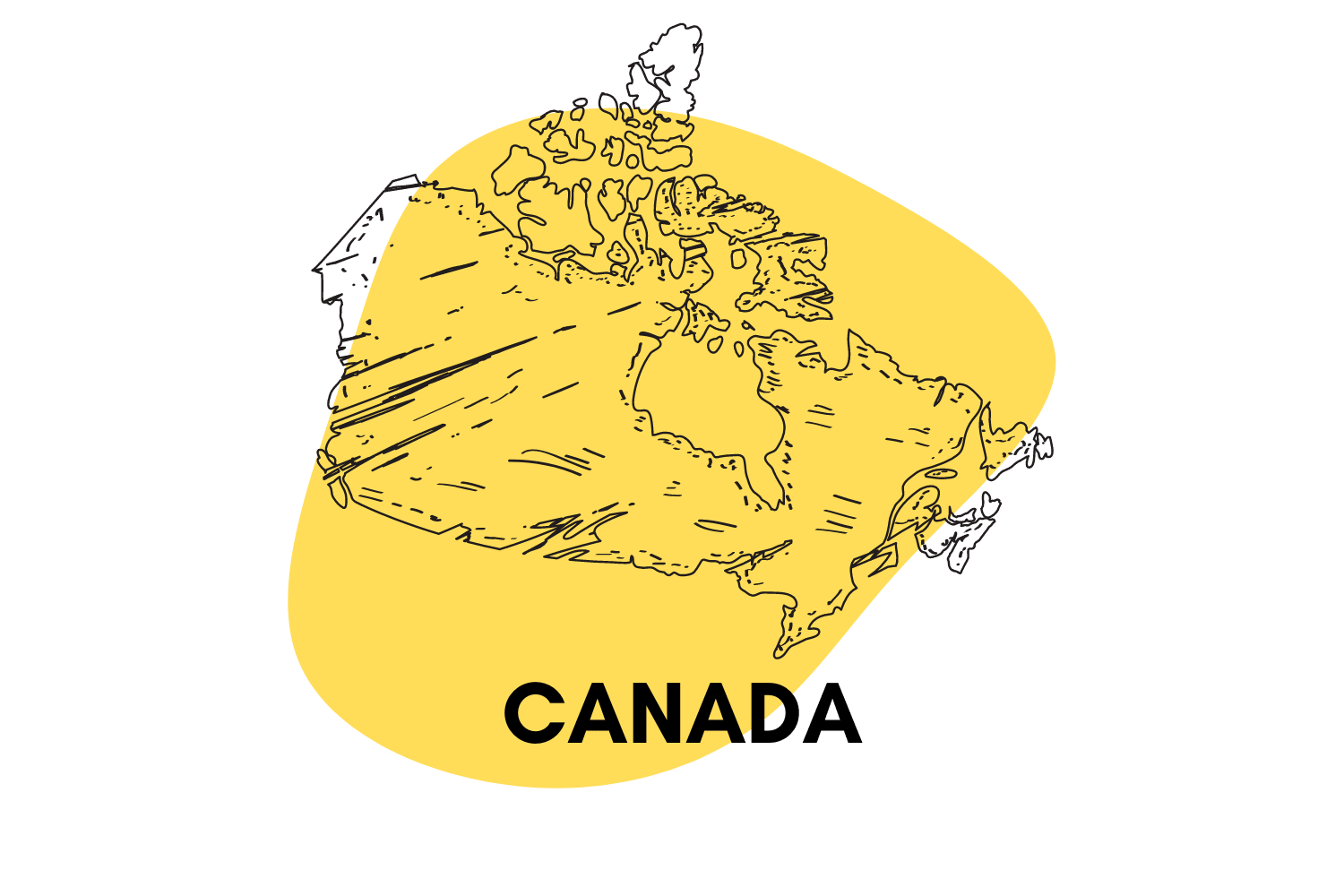Which Countries Have Decriminalized Psychedelics?
We can’t have a free society until people are free to explore their own mind.

So far, roughly 30 countries around the world have moved to decriminalize drugs in some context.
Countries like Portugal removed criminal charges for drug possession throughout the whole country.
In other parts of the world, such as the US, only one state (Oregon) and about a dozen municipalities have made the move to decriminalize natural psychedelics.
In Canada, the city of Vancouver recently removed charges for all drugs — not just psychedelics.
This space is rapidly changing. This page serves as an up to date resource on the current state of changing drug policies around the world.
Tracking Drug Decriminalization Around The World
Most countries ban the same sets of substances.
For example, LSD, MDMA, heroin, cocaine, and cannabis are illegal in almost every country in the world.
It’s the more fringe substances or natural substances that some countries consider differently depending on the context for using the substance in the region.
There’s also a growing number of countries that are choosing to decriminalize all substances.
With decriminalization, drug use doesn’t become legal. All it means is that being in possession of an illicit substance won’t land you a federal criminal charge or jail time.
Related: What’s the Difference Between Decriminalization & Legalization?
Countries That Have Decriminalized Some or All Psychedelics
| Country | Magic Mushroom Laws | MDMA Laws | LSD Laws |
|---|---|---|---|
| Canada | Decriminalized (Select Municipalities) ? | Decriminalized (Select Municipalities) ? | Decriminalized (Select Municipalities) ? |
| United States | Decriminalized (Select Municipalities) ? | Illegal ❌ | Decriminalized (Select Municipalities) ? |
| Austria | Decriminalized ✅ | Illegal ❌ | Illegal ❌ |
| Brazil | Decriminalized ✅ | Illegal ❌ | Illegal ❌ |
| Croatia | Decriminalized ✅ | Decriminalized ✅ | Decriminalized ✅ |
| Czech Republic | Decriminalized ✅ | Decriminalized ✅ | Decriminalized ✅ |
| Italy | Decriminalized ✅ | Decriminalized ✅ | Decriminalized ✅ |
| Jamaica | Decriminalized ✅ | Illegal ❌ | Illegal ❌ |
| Portugal | Decriminalized ✅ | Decriminalized ✅ | Decriminalized ✅ |
| Spain | Decriminalized ✅ | Decriminalized ✅ | Decriminalized ✅ |
| Switzerland | Decriminalized ✅ | Illegal ❌ | Illegal ❌ |
| Netherlands | Legal ⬛️ | Illegal ❌ | Illegal ❌ |

The United States
The Drug Enforcement Agency (DEA) in the United States is responsible for determining the potential for abuse each substance has. They divide these substances into one of 5 schedules based on their level of risk compared to potential benefits.
- Schedule I — drugs with a high potential for abuse and no accepted medical uses
- Schedule II — drugs with a high potential for abuse and accepted medical value
- Schedule III — low potential for physical addiction, but moderate or high potential for psychological addiction
- Schedule IV — drugs that can be abused, but much less often
- Schedule V — drugs with a low potential for abuse
Most psychedelic substances are classified as a Schedule I drug in the US, which brings the highest level of conviction.
What makes the US unique is that each state has an opportunity to introduce its own laws — even if it contradicts existing federal laws.
For example, cannabis is legal for recreational use in over 19 US states, for medical use-only in 24 and illegal for any reason in 11. This comes despite the fact that the federal government still considers marijuana a Schedule I restricted substance throughout the entire country.
Psychedelics laws are just as confusing.
So far, only Oregon has moved to decriminalize natural psychedelics (like magic mushrooms and peyote).
Even in individual states that haven’t decriminalized have municipalities that are now reducing or removing penalties for the possession of psychedelics — including four in Massachusetts, three in California, two in Michigan, and two in Washington.
Legal Psychoactive Substances in the US
Legal (unrestricted) psychoactive substances in the United States include kratom, kava, areca nut, coffee, wild lettuce, tobacco, kanna, mandrake, salvia, morning glory, coleus, and DXM.
Substances such as marijuana are legal in some states for any purpose (unrestricted), and for medical use only in others.
MDMA, ketamine, and DMT are on the verge of becoming legal in the US for medical use only. Recreational use of these substances will likely remain prohibited for the foreseeable future.
Current State of Drug Decriminalization in the US

Canada
Canada’s substance laws are regulated by the Controlled Drugs and Substances Act and The older Food and Drugs Act.
The Food and Drugs Act was first introduced in 1920 as a way to combat the use of opium by migrant workers. Experts suggest these laws were made to target Asian laborers rather than for combatting problems with addiction. The act saw the use of opium as a criminal offense rather than a disease — like it’s viewed today. Offenders were thrown in jail, and there weren’t any programs to help people manage their addiction.
There are four schedules a substance can be included under as per federal law in Canada:
- Schedule I — prescription-only (such as opiate painkillers, cocaine, and amphetamines)
- Schedule II — pharmacy-only medications but no prescription needed (the only psychoactive substances on this list are synthetic cannabinoids)
- Schedule III — over the counter medications & low-level of risk (such as LSD, DMT, psilocybin, psilocin, and 2C-B).
- Schedule IV — monitored, but not illegal
Legal psychoactive substances in Canada include Kratom, kava, marijuana, areca nut, coffee, wild lettuce, tobacco, Kanna, mandrake, salvia, morning glory, nutmeg, coleus, and DXM.

The United Kingdom
In the United Kingdom, drugs can be classified under one of three distinct classes. These classes are regulated as part of the Misuse of Drugs Act of 1971.
This system was made to place the substances that pose the greatest threat to public health in the higher tiers (Class A) and those with the least potential for harm in the lower tier (Class C). As such, those in Class A have the strongest punishments, and drugs in Class C have the lowest.
However, the potential for harm seems to no longer be the basis for which classification a substance is placed — leading many to call for reform to this outdated drug policy.
- Class A — substances deemed the most dangerous & addictive
- Class B — substances that have the potential for harm but also have medical value
- Class C — substances deemed to have the lease potential for harm
Most psychedelics are considered Class A, with the exception of ketamine, codeine, cannabidiol, and cannabis listed under Class B.
Legal psychoactive substances in the UK include coffee, wild lettuce, tobacco, Kanna, salvia, morning glory, san Pedro, peyote, nutmeg, coleus, & DXM.

Australia
Australia generally takes a very conservative stance on substances. Most substances that are illegal in the US or Europe are also illegal in Australia, with a few extras as well.
The Therapeutic Goods Administration (TGA) manages and updates the list of substances in their Poisons Standard — which includes schedules 1 through 10 to classify the legality of specific substances.
- Schedule 1 — not used
- Schedule 2 — pharmacy-only medications
- Schedule 3 — pharmacist-only medications
- Schedule 4 — prescription-only medication or veterinary medicines
- Schedule 5 — caution
- Schedule 6 — poisons
- Schedule 7 — dangerous poisons
- Schedule 8 — controlled drugs
- Schedule 9 — prohibited substances
- Schedule 10 — substances that are very dangerous to public health
Most psychoactive substances, such as LSD, magic mushrooms, DMT, and mescaline, are classified as a schedule 9 substance in Australia.
Legal Psychoactive Substances in Australia include coffee, wild lettuce, tobacco, Kanna, salvia, morning glory, nutmeg, coleus, and DXM.
Australian States That Have Decriminalized Drug Use
- South Australia
- Australian Capital Territory
- Northern Australia
Will We Ever See a Complete Decriminalization of Psychedelics?
Decriminalization works, and there’s plenty of data to back this up.
Removing criminal charges for drug possession has already proven effective in reducing rates of drug addiction, HIV infection, and mental health disease in virtually every country that’s tried it. Yet most of the world is hesitant to relax it’s drug policy.
But we can’t say we blame them. Substance abuse has reached epidemic proportions and the solution is complex and unclear, to say the least.
Every year more countries or local municipalities are axing their outdated policies. They’re no longer turning addicts into criminals and are instead focusing on giving them the treatment and opportunities they need to succeed.
While it’s unclear exactly when we’ll see global decriminalization, the forecast looks promising within the next 7–10 years.









